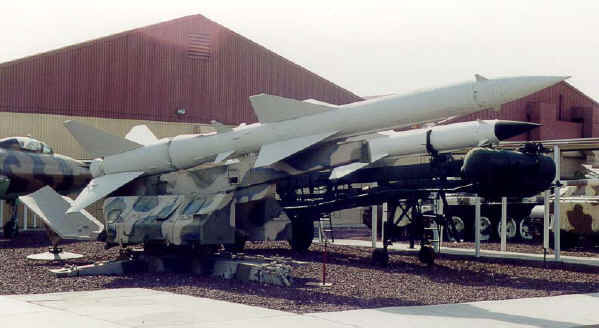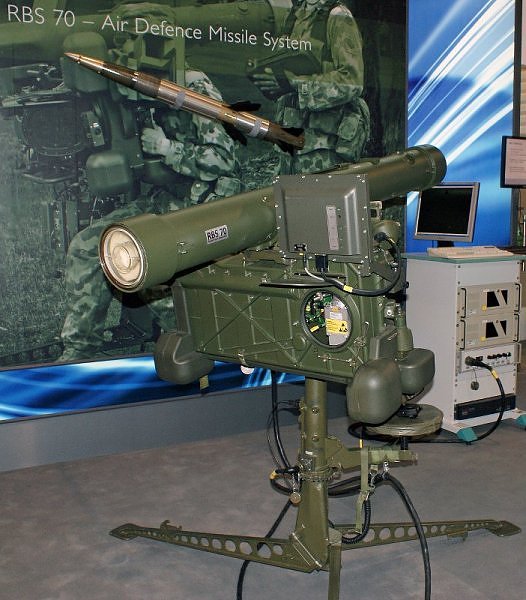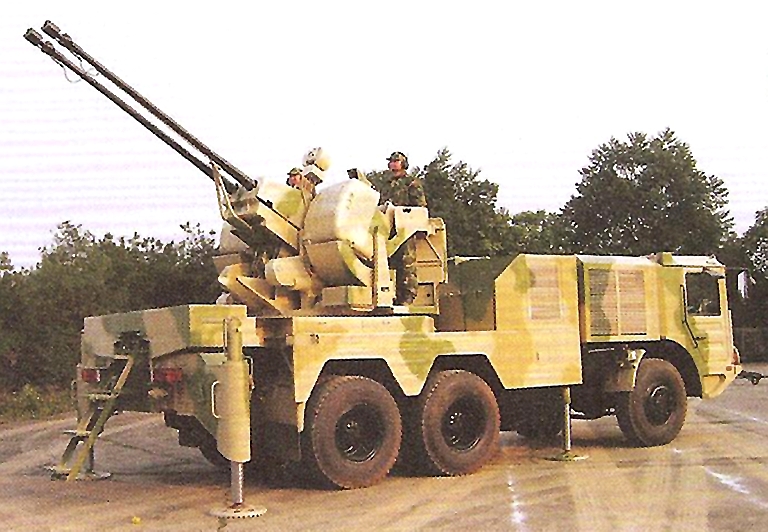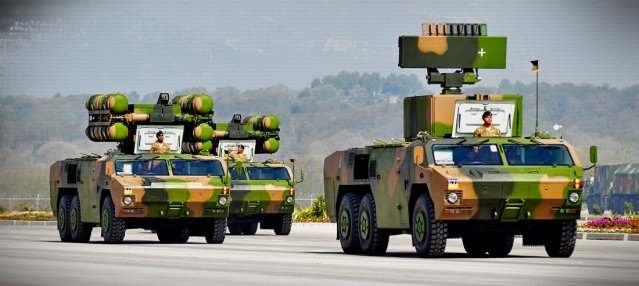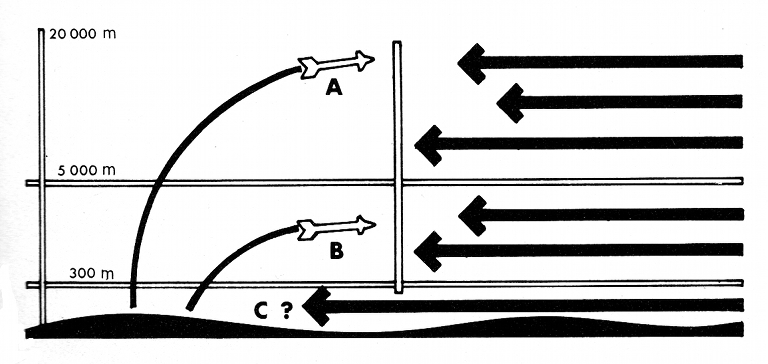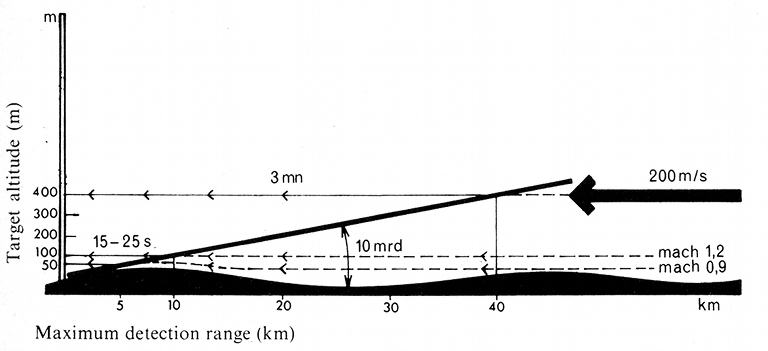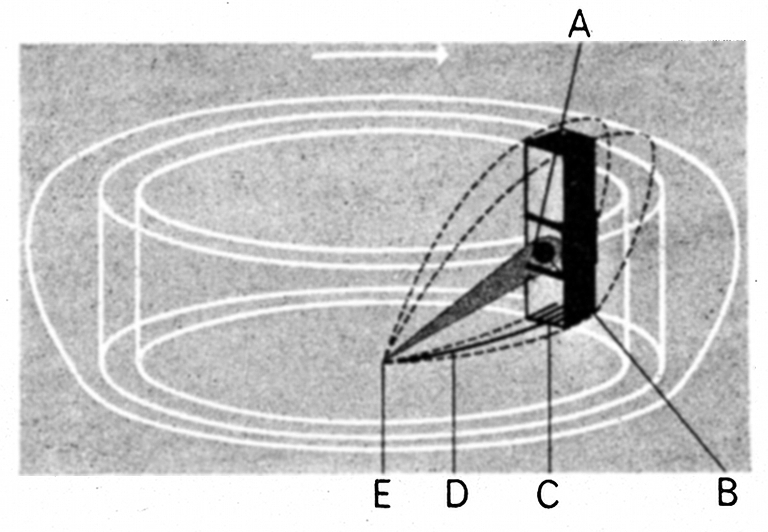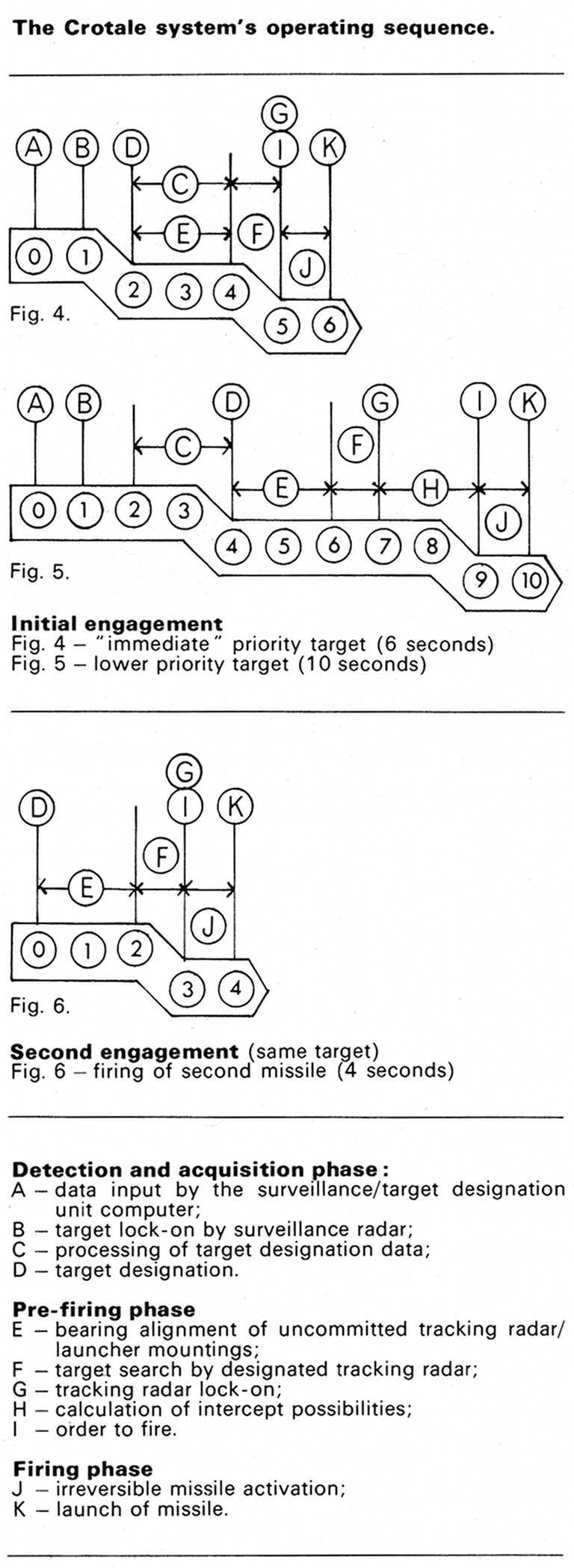Manticore
RETIRED MOD

- Joined
- Jan 18, 2009
- Messages
- 10,115
- Reaction score
- 114
- Country
- Location
The Spada 2000 Plus system and the Pakistani air defense
Written by Francesco Tosato

By 2013, MBDA Italy will complete deliveries of the top ten batteries of air defense systems SPADA 2000 Plus for the Pakistan Air Force (PAF), while negotiations are underway for additional batteries to be used not only for the Air Force, but probably also to 'Army and Navy of the Asian country.
The contract for the acquisition of the top ten batteries for the PAF was signed in 2007 for a total of about 415 million euro, and also provides for the procurement of 750 missiles Aspide 2000 and the construction of two support sites (opened in 2009) area of Karachi, for the maintenance of weapon systems and the conduct of the test missile guidance.
The first battery was delivered to the Pakistan Air Force in February 2010 and in July of the same year, he performed the first tests positive operating fully with the demolition of three radiobersagli (confirming the reliability of the system that has a success rate of 97%). This result was made possible by the close collaboration of Italian Air Force who, since 2009, has supported Pakistani colleagues in training on the new SAM system.
The 2000 Plus is an evolution of the original SWORD SWORD (supplied to our Air Force since the early 80s) which is characterized as an all-weather medium range SAM system, the reaction times of extremely small, resistant to ECM, capable of protecting an area of 2000 sq km from airborne threats, and even UAVs from missiles aviolanciati.
Tested 8 times Italian Air Force, beginning in 2005, the configuration of the batteries SPADA 2000 Plus includes:
New batteries SPADA 2000 Plus, compatibly with the delivery schedule, go to replace the earlier and less accurate systems for point defense Crotale (introduced in 1976 and updated locally to the standard in the Years 4000, 2000) and are integrated into the modern network of defense national airline that is part of the Air Defense Command of the Pakistan Air Force. In this command, located in an underground bunker at the Chaklala Air Base near Rawalpindi, is managed in real time by a score of dedicated workstations, the situation of the national airspace under the four sub-sectors of operation in which the country is divided Peshawar ( North), Quetta (West), Sarghoda (Center), Karachi (South).
SPADA 2000 Plus systems are already deployed in the military part of the International Airport of Islamabad (Chaklala Air Base) and will soon be deployed to protect all other major national air bases (Jacobabad, Kahuta, Kamra, Karachi, Sargodha) as well as Site Nuclear Kushab. In any case, the full compatibility of the shelter with the C-130 Hercules of the PAF, enables the rapid deployment of the batteries in any part of the country.
With this acquisition (and the exercise of the options for an additional 5 batteries), the Pakistan Air Force fully meets the operational requirements for a medium-range SAM systems arising from the particular topography of the country. There still remains a clear need to find soon a modern long-range SAM system that replaces the few old-fashioned HQ-2 (Chinese copy of the Russian SA-2 Guideline characterized by a range of about 35km) who still defend Islamabad and enabling set up a modern multi-layered air defense at least around the capital, the city of Karachi and the nuclear site Kushab.
The system in question, you want the Pakistani military should have a capacity around 100 km, and then in the class of systems S-300 Russian, Chinese HQ-9 or SAMP / T Franco-Italian (currently being delivered to ' Italian Army) and the ability to intercept ballistic missiles at short and medium range as those found in the arsenal of historic rival India (mainly series of Prithvi SRBM and IRBM Agni series). The major stumbling block to the acquisition of such systems is still represented by their high cost, but a decision, perhaps related to the purchase of only 3 batteries for the protection of the above objectives, it is likely to be taken from here a few years in front of the impressive modernization program that is affecting the Indian Air Force and the need to balance the possible deployment by the Indian systems ATBM.
Overall, the acquisition system SPADA 2000 Plus consolidates the existing good relations between Pakistan and our defense industry (already a supplier of Grifo-7PG radar for F-7 and Falco UAV assembled locally) and, thanks to the two maintenance units created on the spot, sets the stage for further profitable future developments.
-------------------------------------------
Spada 2000 - Wikipedia
The first systems Sword began to be delivered to ' Italian Air Force in 1983. The batteries were acquired with subsequent contracts: the first contract for 4 batteries followed definitely a contract for 5 and not more detailed.The total number of batteries purchased should amount to 12. Subsequent work to update the technical reconfiguration of the batteries and reorganization of armed force leading, in 2012, for a formal allocation of 7 batteries, including 4 high and 1 rischierabilità addestrativa. The first phase of improvements began in 1996 and ended in 1999, culminating in the Spada 2000 was delivered to ' the Spanish Air Force . In 2003 he came to the second phase of improvements, the Spada 2000 Plus In September 2007 also the Pakistan Air Force has ordered 10 Spada 2000 Plus system version at a cost of Euro 415 million, which also include the construction of local infrastructure for the maintenance of systems.
-----------------------------------
Spada 2000 Ground based air defence missile system. (Photo: MBDA)
10:17 GMT, February 19, 2009 The Aspide 2000 missile has set yet another exceptional record in its long career. During an air defence exercise that took place at the end of January 2009, the Amoun battery of Kuwait’s Air Defence Brigade carried out five Aspide 2000 missile launches against a series of air targets simulating different types of attack scenarios. All of the launches were successful and all five targets were destroyed, either by direct impact or as a result of the warhead exploding within a miss distance of well below one meter. The launches were performed in different weather conditions (day and night) and showed once again the absolute reliability of MBDA’s Aspide 2000 missile.
As a result of this exercise, the Aspide 2000 was able to establish an absolute record in terms of percentage launch success, establishing a success rate exceeding 97% from over 600 missiles launched around the world. With over 5,000 missiles having already been produced, Aspide is now experiencing a new dawn in its latest “2000” version.
Ing. Fabrizio Giulianini, MBDA’s Executive Group Sales and Business Development Director and MBDA Italy Managing Director, said “This latest achievement of the Aspide 2000 missile has confirmed its operating effectiveness and its design strength which has allowed us to renovate the system without any issues of note. Furthermore, this success also confirms that good system and technological choices were made from the very beginning. This exceptional result will give further impetus to the export activities involving this missile, which, as well as being deployed on the Skyguard/Amoun system, is also used on many other systems such as Skyguard El, the naval Albatros variant and the Spada AMI. Aspide 2000, the latest version of the Aspide missile, as well as being deployed in the Skyguard Amoun, is also used in the Spada 2000 Plus system”.
The Spada 2000 Plus system is a ground based air defence missile system designed to protect vital assets from different types of threat such as fighter and bomber aircraft,cruise missiles, helicopters and UAVs.
The Spada 2000 Plus is characterized by a high degree of modularity and flexibility, based on ISO standard modules.
Each system section comprises a Detection Center and up to four Firing Sections, each one comprising a Fire Control Center and two Missile Launchers each equipped with six missiles. The Spada 2000 Plus system is also capable of integrating V-SHORAD weapon systems and can operate autonomously or can be integrated within a higher level defence network or architecture.
Spada 2000 plus complex inauguration in Karachi
Spada 2000 plus complex inauguration in Karachi ~ ASIAN DEFENCE


Air Chief Marshal Tanvir Mahmood Ahmed, Chief of the Air Staff, Pakistan Air Force, inaugurated the `Missile Maintenance Complex' at a PAF Base in Karachi. PAF statement said that the Complex is a significant enhancement of PAF's engineering capability to support various missile systems. During the inaugural address, the CAS appreciated the personnel involved in the project for their professionalism and hard work to complete it within short time. The CAS hoped the complex would further strengthen PAF's defence capabilities.
The Spada 2000 is produced by the Italian-controlled part of the firm, MBDA Italia, and used by Italy and Spain. The system provides air defence missile coverage of 2,000km². The Aspide 2000 missiles can intercept crossing and approaching targets to a range of 25km. The kill probability is high, even against highly agile crossing targets. The system can engage up to four targets simultaneously with Aspide missiles.Spada 2000 Plus will replace the old French Crotale air defence systems.Up to 10 light anti-air weapons can be managed by the system in addition to its Firing Sections by SPADA 2000 system . Aspide 2000's radar is the Selex Sistemi Integrati (formerly Alenia Marconi Systems) RAC-3D, which gives three-dimensional volumetric air surveillance, detection and tracking. The system has the capacity to track 100 targets simultaneously within a range of 60km.
Spada 2000 was evaluated by the PAF officials in 2006 and was selected for acquisition defeating Raytheon SL-AMRAAM and German Diehl BGT IRIS-t SL air defence systems. Ten batteries of Spada 2000 air defense system worth $656.56 million will be delivered to Pakistan Air Force before August 2012.



Written by Francesco Tosato

By 2013, MBDA Italy will complete deliveries of the top ten batteries of air defense systems SPADA 2000 Plus for the Pakistan Air Force (PAF), while negotiations are underway for additional batteries to be used not only for the Air Force, but probably also to 'Army and Navy of the Asian country.
The contract for the acquisition of the top ten batteries for the PAF was signed in 2007 for a total of about 415 million euro, and also provides for the procurement of 750 missiles Aspide 2000 and the construction of two support sites (opened in 2009) area of Karachi, for the maintenance of weapon systems and the conduct of the test missile guidance.
The first battery was delivered to the Pakistan Air Force in February 2010 and in July of the same year, he performed the first tests positive operating fully with the demolition of three radiobersagli (confirming the reliability of the system that has a success rate of 97%). This result was made possible by the close collaboration of Italian Air Force who, since 2009, has supported Pakistani colleagues in training on the new SAM system.
The 2000 Plus is an evolution of the original SWORD SWORD (supplied to our Air Force since the early 80s) which is characterized as an all-weather medium range SAM system, the reaction times of extremely small, resistant to ECM, capable of protecting an area of 2000 sq km from airborne threats, and even UAVs from missiles aviolanciati.
Tested 8 times Italian Air Force, beginning in 2005, the configuration of the batteries SPADA 2000 Plus includes:
- a Detection Centre focuses on RAC-3D radar, three-dimensional (radius of the discovery of 60 km, capable of simultaneously tracking up to 100 targets simultaneously and ingaggiarne 4), which brings together in one shelter also the tactical operations center responsible for the management of targets and their classification according to the level of threat and possibly also able to coordinate the fire, within a radius of 10 km, up to 10 units of anti-aircraft artillery radar Lead (systems such as Oerlikon GDF-005 35mm Bofors 40mm already supplied to the Armed Forces Pakistan or any modern unit C-Ram type the Porcupine, to remain in system concepts Italian).
- 2 sections of fire (possibly expandable to four) made from radar tracking and illumination of the target, from the fire control and two pitchers with six Aspide 2000 missiles ready to fire.
- The missile Asp 2000, Asp improved version of the previous (in turn national project developed from the air-to-air missile American AIM-7 Sparrow), characterized by a single-stage rocket motor, powered by solid fuel, which ensures supersonic speeds , high maneuverability and the capability to engage targets at distances greater than 25 km thanks to the semi-active homing guidance that activates the head preframmentata containing 35 kg of high explosives.
New batteries SPADA 2000 Plus, compatibly with the delivery schedule, go to replace the earlier and less accurate systems for point defense Crotale (introduced in 1976 and updated locally to the standard in the Years 4000, 2000) and are integrated into the modern network of defense national airline that is part of the Air Defense Command of the Pakistan Air Force. In this command, located in an underground bunker at the Chaklala Air Base near Rawalpindi, is managed in real time by a score of dedicated workstations, the situation of the national airspace under the four sub-sectors of operation in which the country is divided Peshawar ( North), Quetta (West), Sarghoda (Center), Karachi (South).
SPADA 2000 Plus systems are already deployed in the military part of the International Airport of Islamabad (Chaklala Air Base) and will soon be deployed to protect all other major national air bases (Jacobabad, Kahuta, Kamra, Karachi, Sargodha) as well as Site Nuclear Kushab. In any case, the full compatibility of the shelter with the C-130 Hercules of the PAF, enables the rapid deployment of the batteries in any part of the country.
With this acquisition (and the exercise of the options for an additional 5 batteries), the Pakistan Air Force fully meets the operational requirements for a medium-range SAM systems arising from the particular topography of the country. There still remains a clear need to find soon a modern long-range SAM system that replaces the few old-fashioned HQ-2 (Chinese copy of the Russian SA-2 Guideline characterized by a range of about 35km) who still defend Islamabad and enabling set up a modern multi-layered air defense at least around the capital, the city of Karachi and the nuclear site Kushab.
The system in question, you want the Pakistani military should have a capacity around 100 km, and then in the class of systems S-300 Russian, Chinese HQ-9 or SAMP / T Franco-Italian (currently being delivered to ' Italian Army) and the ability to intercept ballistic missiles at short and medium range as those found in the arsenal of historic rival India (mainly series of Prithvi SRBM and IRBM Agni series). The major stumbling block to the acquisition of such systems is still represented by their high cost, but a decision, perhaps related to the purchase of only 3 batteries for the protection of the above objectives, it is likely to be taken from here a few years in front of the impressive modernization program that is affecting the Indian Air Force and the need to balance the possible deployment by the Indian systems ATBM.
Overall, the acquisition system SPADA 2000 Plus consolidates the existing good relations between Pakistan and our defense industry (already a supplier of Grifo-7PG radar for F-7 and Falco UAV assembled locally) and, thanks to the two maintenance units created on the spot, sets the stage for further profitable future developments.
-------------------------------------------
Spada 2000 - Wikipedia
The first systems Sword began to be delivered to ' Italian Air Force in 1983. The batteries were acquired with subsequent contracts: the first contract for 4 batteries followed definitely a contract for 5 and not more detailed.The total number of batteries purchased should amount to 12. Subsequent work to update the technical reconfiguration of the batteries and reorganization of armed force leading, in 2012, for a formal allocation of 7 batteries, including 4 high and 1 rischierabilità addestrativa. The first phase of improvements began in 1996 and ended in 1999, culminating in the Spada 2000 was delivered to ' the Spanish Air Force . In 2003 he came to the second phase of improvements, the Spada 2000 Plus In September 2007 also the Pakistan Air Force has ordered 10 Spada 2000 Plus system version at a cost of Euro 415 million, which also include the construction of local infrastructure for the maintenance of systems.
-----------------------------------
Spada 2000 Ground based air defence missile system. (Photo: MBDA)
10:17 GMT, February 19, 2009 The Aspide 2000 missile has set yet another exceptional record in its long career. During an air defence exercise that took place at the end of January 2009, the Amoun battery of Kuwait’s Air Defence Brigade carried out five Aspide 2000 missile launches against a series of air targets simulating different types of attack scenarios. All of the launches were successful and all five targets were destroyed, either by direct impact or as a result of the warhead exploding within a miss distance of well below one meter. The launches were performed in different weather conditions (day and night) and showed once again the absolute reliability of MBDA’s Aspide 2000 missile.
As a result of this exercise, the Aspide 2000 was able to establish an absolute record in terms of percentage launch success, establishing a success rate exceeding 97% from over 600 missiles launched around the world. With over 5,000 missiles having already been produced, Aspide is now experiencing a new dawn in its latest “2000” version.
Ing. Fabrizio Giulianini, MBDA’s Executive Group Sales and Business Development Director and MBDA Italy Managing Director, said “This latest achievement of the Aspide 2000 missile has confirmed its operating effectiveness and its design strength which has allowed us to renovate the system without any issues of note. Furthermore, this success also confirms that good system and technological choices were made from the very beginning. This exceptional result will give further impetus to the export activities involving this missile, which, as well as being deployed on the Skyguard/Amoun system, is also used on many other systems such as Skyguard El, the naval Albatros variant and the Spada AMI. Aspide 2000, the latest version of the Aspide missile, as well as being deployed in the Skyguard Amoun, is also used in the Spada 2000 Plus system”.
The Spada 2000 Plus system is a ground based air defence missile system designed to protect vital assets from different types of threat such as fighter and bomber aircraft,cruise missiles, helicopters and UAVs.
The Spada 2000 Plus is characterized by a high degree of modularity and flexibility, based on ISO standard modules.
Each system section comprises a Detection Center and up to four Firing Sections, each one comprising a Fire Control Center and two Missile Launchers each equipped with six missiles. The Spada 2000 Plus system is also capable of integrating V-SHORAD weapon systems and can operate autonomously or can be integrated within a higher level defence network or architecture.
Spada 2000 plus complex inauguration in Karachi
Spada 2000 plus complex inauguration in Karachi ~ ASIAN DEFENCE


Air Chief Marshal Tanvir Mahmood Ahmed, Chief of the Air Staff, Pakistan Air Force, inaugurated the `Missile Maintenance Complex' at a PAF Base in Karachi. PAF statement said that the Complex is a significant enhancement of PAF's engineering capability to support various missile systems. During the inaugural address, the CAS appreciated the personnel involved in the project for their professionalism and hard work to complete it within short time. The CAS hoped the complex would further strengthen PAF's defence capabilities.
The Spada 2000 is produced by the Italian-controlled part of the firm, MBDA Italia, and used by Italy and Spain. The system provides air defence missile coverage of 2,000km². The Aspide 2000 missiles can intercept crossing and approaching targets to a range of 25km. The kill probability is high, even against highly agile crossing targets. The system can engage up to four targets simultaneously with Aspide missiles.Spada 2000 Plus will replace the old French Crotale air defence systems.Up to 10 light anti-air weapons can be managed by the system in addition to its Firing Sections by SPADA 2000 system . Aspide 2000's radar is the Selex Sistemi Integrati (formerly Alenia Marconi Systems) RAC-3D, which gives three-dimensional volumetric air surveillance, detection and tracking. The system has the capacity to track 100 targets simultaneously within a range of 60km.
Spada 2000 was evaluated by the PAF officials in 2006 and was selected for acquisition defeating Raytheon SL-AMRAAM and German Diehl BGT IRIS-t SL air defence systems. Ten batteries of Spada 2000 air defense system worth $656.56 million will be delivered to Pakistan Air Force before August 2012.


Last edited:















